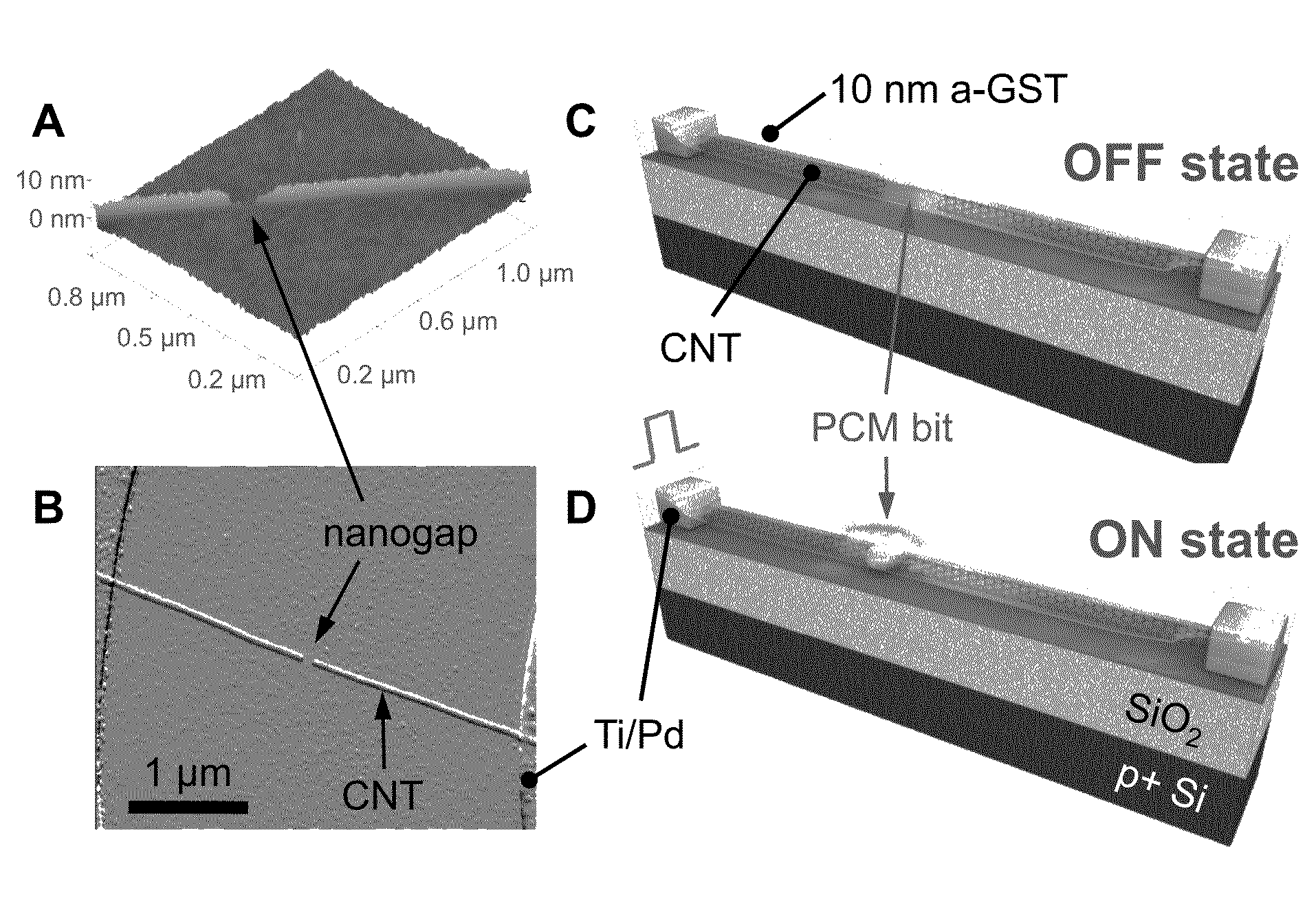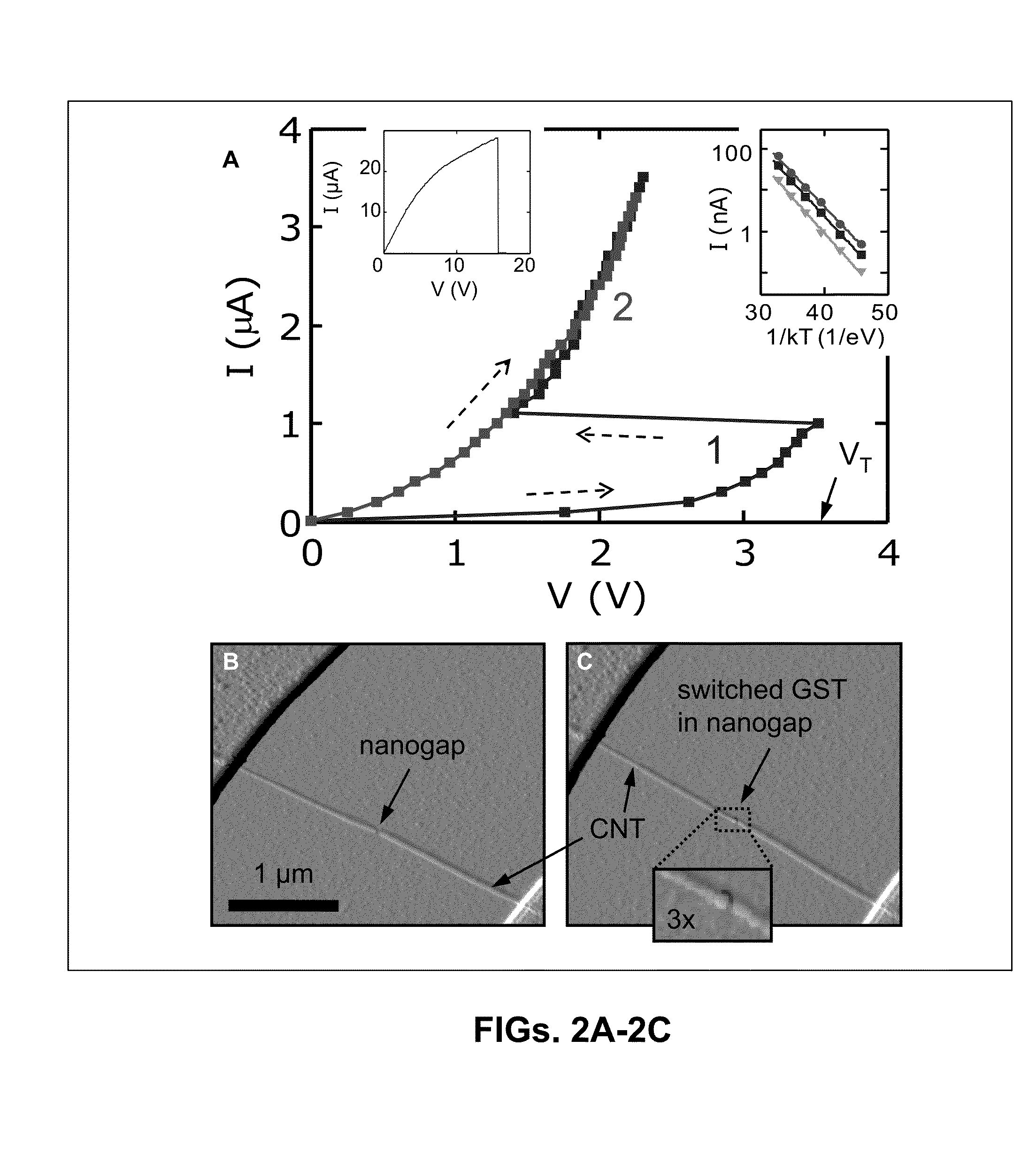Adaptive resistive device and methods thereof
- Summary
- Abstract
- Description
- Claims
- Application Information
AI Technical Summary
Benefits of technology
Problems solved by technology
Method used
Image
Examples
Embodiment Construction
[0023]The subject disclosure can utilize or combine some or all embodiments described in U.S. patent application Ser. No. 12 / 463,953, filed on May 11, 2009, entitled, “Resistive Changing Device.” The aforementioned patent application is hereby incorporated by reference in its entirety.
[0024]One embodiment of the subject disclosure entails a device including a nanoelectrode having a gap, and a resistive change material located in the gap, wherein an application of a voltage potential across first and second terminals of the nanoelectrode causes the resistive change material to modify at least one non-volatile memory state of the resistive change material.
[0025]One embodiment of the subject disclosure entails a method for applying from a voltage source a first signal to a terminal of a nanoelectrode to program a non-volatile memory state of a resistive change material, where the resistive change material is located in a nanogap of the nanoelectrode. The method also includes receiving ...
PUM
 Login to View More
Login to View More Abstract
Description
Claims
Application Information
 Login to View More
Login to View More - R&D Engineer
- R&D Manager
- IP Professional
- Industry Leading Data Capabilities
- Powerful AI technology
- Patent DNA Extraction
Browse by: Latest US Patents, China's latest patents, Technical Efficacy Thesaurus, Application Domain, Technology Topic, Popular Technical Reports.
© 2024 PatSnap. All rights reserved.Legal|Privacy policy|Modern Slavery Act Transparency Statement|Sitemap|About US| Contact US: help@patsnap.com










